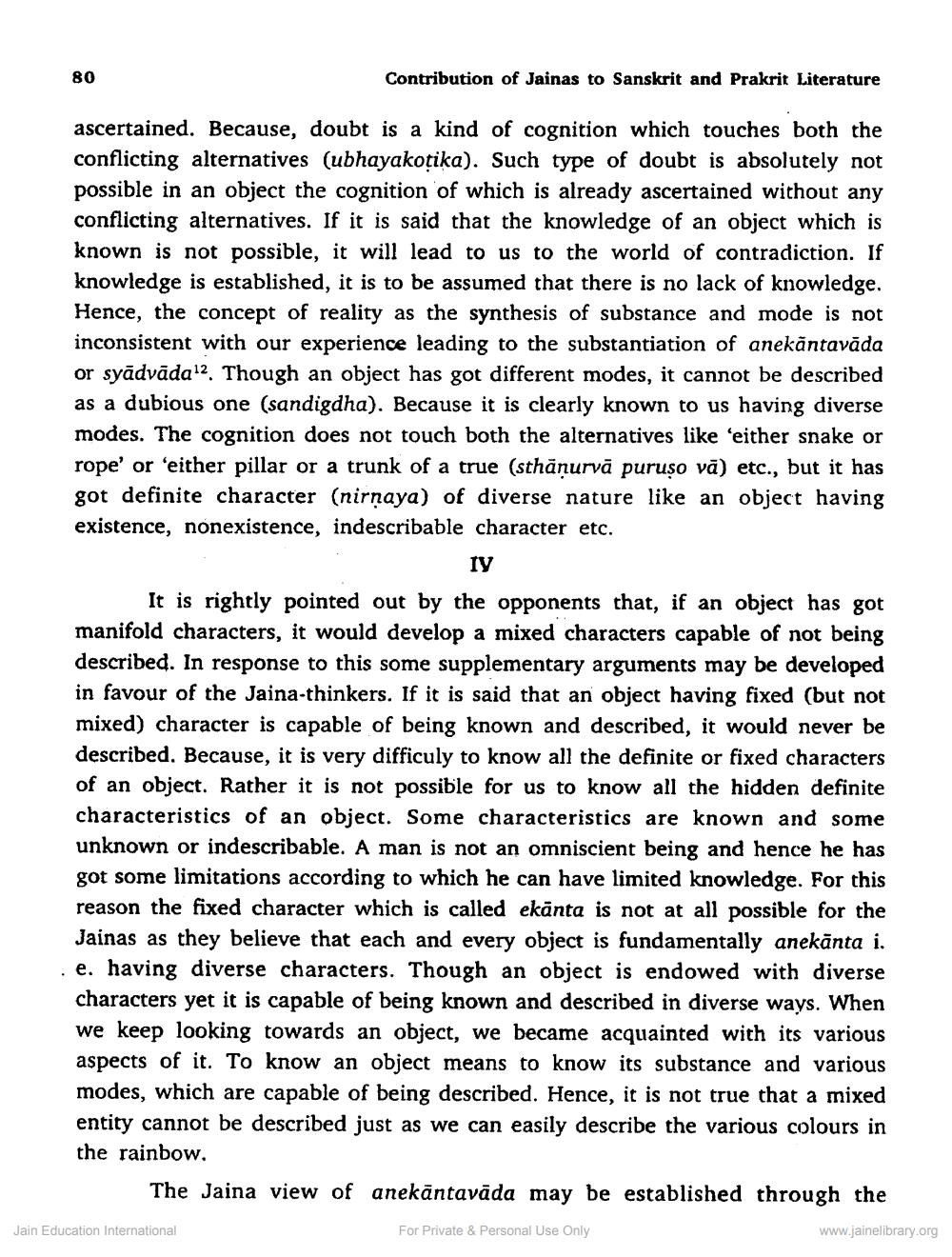________________
80
Contribution of Jainas to Sanskrit and Prakrit Literature
ascertained. Because, doubt is a kind of cognition which touches both the conflicting alternatives (ubhayakotika). Such type of doubt is absolutely not possible in an object the cognition of which is already ascertained without any conflicting alternatives. If it is said that the knowledge of an object which is known is not possible, it will lead to us to the world of contradiction. If knowledge is established, it is to be assumed that there is no lack of knowledge. Hence, the concept of reality as the synthesis of substance and mode is not inconsistent with our experience leading to the substantiation of anekantavāda or syādvāda12. Though an object has got different modes, it cannot be described as a dubious one (sandigdha). Because it is clearly known to us having diverse modes. The cognition does not touch both the alternatives like 'either snake or rope' or 'either pillar or a trunk of a true (sthāṇurvā puruṣo va) etc., but it has got definite character (nirnaya) of diverse nature like an object having existence, nonexistence, indescribable character etc.
IV
It is rightly pointed out by the opponents that, if an object has got manifold characters, it would develop a mixed characters capable of not being described. In response to this some supplementary arguments may be developed in favour of the Jaina-thinkers. If it is said that an object having fixed (but not mixed) character is capable of being known and described, it would never be described. Because, it is very difficuly to know all the definite or fixed characters of an object. Rather it is not possible for us to know all the hidden definite characteristics of an object. Some characteristics are known and some unknown or indescribable. A man is not an omniscient being and hence he has got some limitations according to which he can have limited knowledge. For this reason the fixed character which is called ekanta is not at all possible for the Jainas as they believe that each and every object is fundamentally anekānta i. . e. having diverse characters. Though an object is endowed with diverse characters yet it is capable of being known and described in diverse ways. When we keep looking towards an object, we became acquainted with its various aspects of it. To know an object means to know its substance and various modes, which are capable of being described. Hence, it is not true that a mixed entity cannot be described just as we can easily describe the various colours in the rainbow.
The Jaina view of anekantavāda may be established through the
For Private & Personal Use Only
www.jainelibrary.org
Jain Education International




